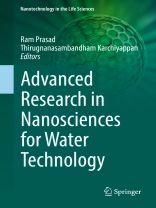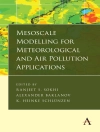The establishment of clean, safe water is one of the major challenges facing societies around the globe. The continued urbanization of human populations, the increasing manipulation of natural resources, and the resulting pollution are driving remarkable burden on water resources. Increasing demands for food, energy, and natural resources are expected to continue to accelerate in the near future in response to the demands of these changing human populations. In addition, the complexity of human activities is leading to a diversity of new chemical contaminants in the environment that represent a major concern for water managers. This will create increased pressure on both water quantity and quality, making it increasingly difficult to provide a sustainable supply of water for human welfare and activities.
Although protection of water resources is the best long-term solution, we will also need innovative novel approaches and technologies to water treatment to ensure an adequatesuperior quality resource to meet these needs. Solving tomorrow’s water issues will require unique approaches that incorporate emerging new technologies.
Great advances have been made in the area of nanotechnology. Due to their unique physical and chemical properties, nanomaterials are extensively used in antibacterial medical products, membrane filters, electronics, catalysts, and biosensors. Nanoparticles can have distinctly different properties from their bulk counterparts, creating the opportunity for new materials with a diversity of applications. Recent developments related to water treatment include the potential use of carbon nanotubes, nanocompositae, nanospheres, nanofibers, and nanowires for the removal of a diversity of chemical pollutants. By exploiting the assets and structure of these new materials, such as increased surface area, high reactivity, and photocatalytic action, it will be possible to create technologies that can be very efficient at removing and degrading environmental pollutants. Understanding and using these unique properties should lead to innovative, cost-effective applications for addressing the complexities of emerging needs for water treatment and protection. Although still in the early stages, research into the application of nanotechnology shows great promise for solving some of these major global water issues. This comprehensive text describes the latest research and application methods in this rapidly advancing field.
สารบัญ
Preface.- Application of nanomaterials in bio-electrochemical water treatment.- Nanomaterials in the development of biosensors.- Water and wastewater treatment using bioelectrochemical systems.- New technologies to remove halides from water.- Clay-based nano-composites.- Silver nanoparticles as a biocide for water treatment applications.- Emerging pollutants degradation using Fe-doped Ti O2 under UV and visible light.- Bionanocomposite materials based on titanium oxide/clay for waste water treatment.- Improvement of mechanical properties of hydro-thermal aged glass fiber reinforced polymer composites through nano-Ti O2 and Al2O3 .- Water pollution remediation techniques with special focus on adsorption.- Electron-electron correlation in a spherical quantum dot for water management.- Polymeric and metallic nano-composites forfiltration of water.- Nanotechnology Explored for the Water Purification.- Nano-functionalized materials for effective oil-water treatment.- Immobilized nano catalysts for degradation of industrial wastewater.- Application of nano-photocatalysts for disinfection of wastewater.- Oxide nanomaterials for efficient water treatment.- Nanotechnology and innovative methods for waste water treatment and purification.- Micro- and nano hollow spheres in heavy metal removals from water.- Index.-
เกี่ยวกับผู้แต่ง
Ram Prasad, Ph.D. is associate with Amity Institute of Microbial Technology, Amity University, Uttar Pradesh, India since 2005. His research interest includes microbiology, plant-microbe-interactions, sustainable agriculture and microbial nanobiotechnology. Dr. Prasad has more than hundred publications to his credit, including research papers, review articles & book chapters and five patents issued or pending, and edited or authored several books. Dr. Prasad has twelve years of teaching experience and he has been awarded the Young Scientist Award (2007) & Prof. J.S. Datta Munshi Gold Medal (2009) by the International Society for Ecological Communications; FSAB fellowship (2010) by the Society for Applied Biotechnology; the American Cancer Society UICC International Fellowship for Beginning Investigators, USA (2014); Outstanding Scientist Award (2015) in the field of Microbiology by Venus International Foundation; BRICPL Science Investigator Award (ICAABT-2017) and Research Excellence Award (2018). He has been serving as editorial board member: Frontiers in Microbiology, Frontiers in Nutrition, Academia Journal of Biotechnology including series editor of Nanotechnology in the Life Sciences, Springer Nature, USA. Previously, Dr. Prasad served as Visiting Assistant Professor, Whiting School of Engineering, Department of Mechanical Engineering at Johns Hopkins University, USA and presently, working as Research Associate Professor at School of Environmental Sciences and Engineering, Sun Yat-Sen University, Guangzhou, China.
Thirugnanasambandham Karchiyappan, Ph.D. is pursuing a career that contributes the valuable teaching and research in the area of Chemistry and Engineering. He completed Bachelors & Master’s degree in Chemistry from Bharathiyar University, Tamilnadu, India and did Ph.D. in Chemistry (Anna University, Tamilnadu, India) by studying industrial wastewater treatment. He has been focused the research area ofwastewater and drinking water purification, biogas generation, CO
2 capture, biodegradable polymers and fermentation technology. He has published twenty five research articles in international peer review journals and attended the more than ten seminars or conferences. Presently, working as Post-Doctoral Research Fellow in UEM, Brazil.












